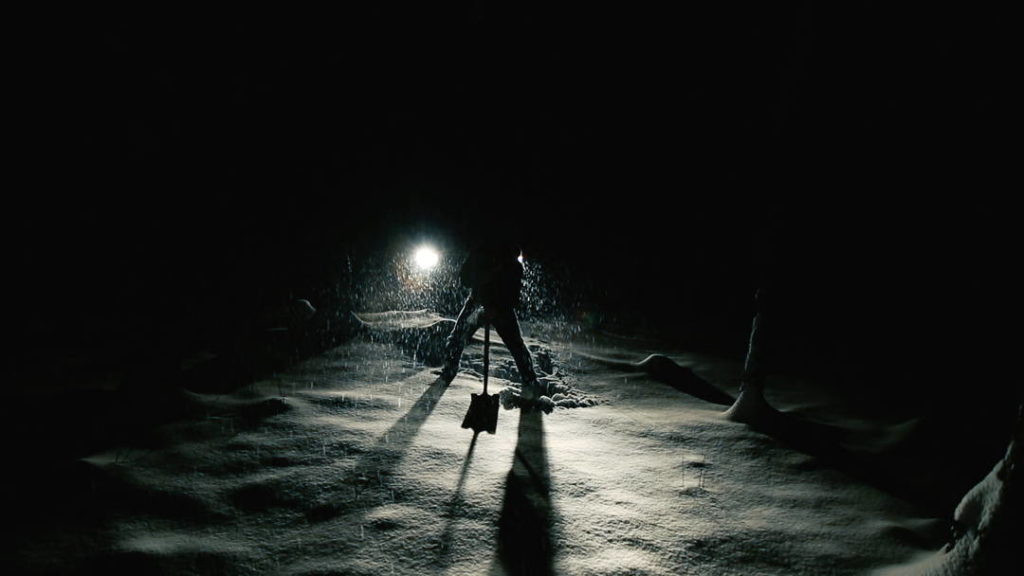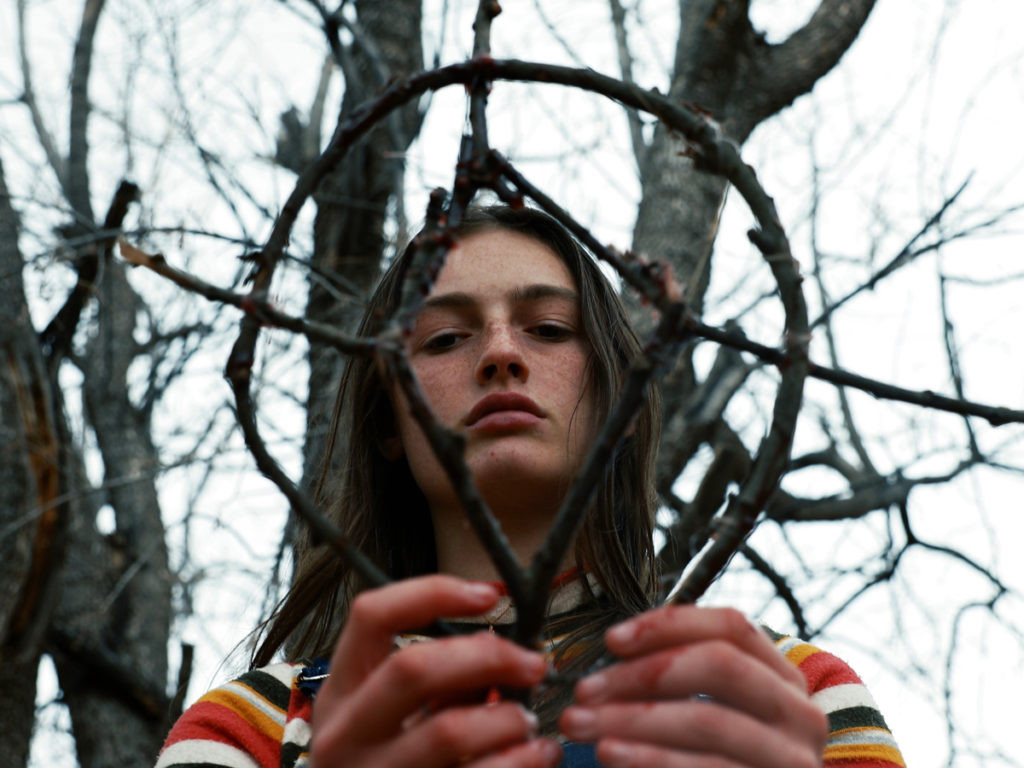Blank Text
I. DIY or Die: The Adams Family Ethos
“To me, punk rock is the freedom to create, freedom to be successful, freedom to not be successful, freedom to be who you are. It’s freedom.” – Patti Smith
There’s a unique thrill in witnessing artists from various mediums venture into horror and discover it as their true calling. From Jordan Peele’s societal thrillers to Skottie Young’s comic book chills, and from William Friedkin’s cinematic terror to T. Kingfisher’s eerie tales, the horror genre has welcomed talents like Colson Whitehead, S.A. Barnes, Alex di Campi, Erica Henderson, and even the wonderfully bizarre Chuck Tingle. The reasons for this migration to horror are as diverse as the artists themselves, but a significant factor is horror’s inherent inclusivity and the empowering DIY spirit that fuels it.
The heart of horror beats with a punk rock ethos: if you crave scares that are missing from the world, you grab the reins and create them yourself. Do it yourself. Figure it out. No gatekeepers, just creators and a supportive community eager to champion original voices. This is where The Adams Family story begins.
About a decade ago, the family—dad John Adams, mom Toby Poser, and daughters Lulu and Zelda Adams—embarked on a filmmaking journey. Their projects are deeply personal, self-funded ventures that grant them complete creative control over every stage: writing, acting, producing, directing, and sound design. The Adams Family does it all, together. They operate as a collective, fostering an environment of creative experimentation and collaborative problem-solving. Successes are celebrated, and failures become valuable lessons, guiding their next endeavors. They answer only to their artistic vision, telling the stories they are passionate about.
Initially, their filmography leaned towards quirky indie projects, family-centric crime thrillers with a touch of humor, and heartfelt dramedies. However, a turning point arrived a few films into their journey when they embraced horror. For the sake of all horror enthusiasts, let’s hope they never look back.
II. Whispers from the Shadows: Delving into The Deeper You Dig
“We need ghost stories because we, in fact, are the ghosts.” – Stephen King
The opening scene of The Adams Family’s The Deeper You Dig is hauntingly simple yet profoundly unsettling. A man in a respirator mask sifts through rubble in a house undergoing renovation, while the vintage strains of “After You’ve Gone” drift from tin-can speakers of an old Victrola perched on a dusty mantel. This single shot masterfully sets the film’s eerie and mesmerizing tone, which only deepens as the narrative unfolds.
Ivy (Toby Poser) is introduced as a tarot card reader, a benign con artist preying on vulnerable locals with promises of connecting them to the departed. Any genuine connection to the supernatural she might have once possessed has long since faded. Her teenage daughter, Echo (Zelda Adams), is a kind-hearted, sarcastic, and charming girl who enjoys hunting and sledding. Ivy and Echo live a quiet, secluded life, their days filled with work and school, their bond a comforting constant.
Kurt (John Adams), another solitary figure in their community, is the man renovating the house from the opening scene. He also has a drinking problem. One fateful night, driving home after several drinks, his attention is momentarily diverted by a family of deer crossing the icy road.
That split second is all it takes. A thump under the tires. The car lurches. He stops, investigates, and finds Echo, fresh from a nighttime sledding adventure, lifeless by the roadside.
The Deeper You Dig, like the finest noir tales, poses a stark, penetrating question: what would you do in such a horrific situation?
What would anyone do?
Kurt, in a moment of drunken panic, makes the catastrophic decision to cover up the accident. Under the cloak of night and falling snow, he drags Echo’s body deep into the woods, attempting a shallow burial. When that fails, he hauls her corpse back to the house he’s renovating, concealing her in a grimy bathtub, foolishly believing it’s the end of the story.
 Digging Credit: Wonder Wheel Productions
Digging Credit: Wonder Wheel Productions
Initially, The Deeper You Dig appears to be a masterfully crafted neo-noir thriller, a pressure cooker of escalating tension. And it undeniably is. However, as the narrative progresses, delving deeper into its unsettling core, the film reveals its beautifully disturbing machinery at work beneath the surface. When Echo begins to manifest in Kurt’s waking hours, initially appearing as a guilt-induced hallucination, it becomes clear she is far more substantial than a mere figment of a troubled conscience. Even in death, Echo has her own agenda.
Ivy’s fraudulent tarot readings are not accidental; they are a deliberate misdirection, a trick the film employs to disorient the audience. It initially suggests a world where the supernatural is merely a scam, exploiting those seeking solace in a callous world.
But the essence of ghost stories lies in their unexpected reality. You might scoff at them until you find yourself ensnared in one.
Like all Adams Family productions, it’s remarkable to consider that The Deeper You Dig is essentially a homemade film. This has been a hallmark of their work from the beginning, but in this film, the family’s dedication truly shines. There’s a distinct vision and compositional artistry that rivals many big-budget productions. The film’s claustrophobic and unsettling atmosphere is meticulously crafted.
Visually, the film is consistently striking. The Adamses are masters of using natural conditions to their advantage. Primarily shot with natural light, in real weather—be it a snowy night, a bright day, or a somber evening—their resourcefulness and imagination are astounding. They achieve cinematic brilliance with seemingly simple tools: a camera, a tripod, and boundless creativity.
The Deeper You Dig stands as a remarkable film in its own right, but within the Adams Family’s horror journey, it served as a foundation. It was their subsequent film that would truly solidify their place in the genre.
III. Seasonal Cycles of Fear: Unpacking Hellbender
“To me, punk is about being an individual and going against the grain and standing up and saying ‘This is who I am.’” – Joey Ramone
For their next project, The Adams Family envisioned something more ambitious. Hellbender was planned with a larger cast, diverse locations, and higher production values. They aimed to push their creative boundaries.
Then, the COVID-19 pandemic struck, forcing them to scale back. They honed their vision, stripping away excess to reveal a story as sharp and potent as a razor’s edge.
The result was Hellbender.
Again produced by their Wonder Wheel Productions and distributed by Yellow Veil Pictures, Hellbender was filmed during a 20,000-mile cross-country road trip, stretching from their New York home to Maine, then across to Washington and the Pacific coast. The film tells the story of Izzy (Zelda Adams), a lonely teenager, and her fiercely protective Mother (Toby Poser). They live in isolated seclusion deep within the woods. Mother insists Izzy is ill, unable to venture into the outside world, meet people, or form friendships. The world, Mother claims, is too dangerous for Izzy.
But the truth is far more sinister: they are the danger.
When Izzy defies her mother and befriends a local college girl, her carefully constructed reality shatters, blurring the lines between illusion and truth. Drawn back for more connection, Izzy finds herself at a pool party, indulging in tequila shots. When dared to eat an earthworm, Izzy, raised strictly vegan and starved of experiences, readily accepts. She’s never tasted anything living, never had friends. Her curiosity and desire to belong are palpable.
This act of rebellion unleashes chaos.
Izzy and Mother are revealed to be Hellbenders, ancient, enigmatic beings described as a fusion of witch, demon, and apex predator. They appear human but are far more powerful and terrifying.
The essence of Hellbenders is their sustenance: fear. They crave terror from their victims before consumption, as fear fuels their immortality and strength. The more dread they inspire and devour, the greater their power becomes.
A chilling parallel to horror creators themselves.
Whether intentionally metaphorical or not, the Hellbenders perfectly embody the spirit of those who trade in scares.
Mother constantly reminds Izzy of responsibility accompanying power, echoing platitudes of restraint. But Izzy, intoxicated by her burgeoning monstrous abilities, begins to resist control.
 HB-Z-totem Credit: Wonder Wheel Productions
HB-Z-totem Credit: Wonder Wheel Productions
Hellbender isn’t just a product of The Adams Family’s DIY ethos; it’s a film about the yearning for liberation, for claiming one’s identity. It chronicles Izzy’s metamorphosis from a sheltered teen into a fearless, bloodthirsty predator, embodying primordial nightmares.
The film explores cycles and needs, death and failure, the fragility of legacies, and the illusion of control. Cycles are central, mirroring Izzy’s transformation. As she embraces her true nature, Mother’s attempts at control escalate, culminating in a chillingly honest threat:
“If you break my heart, I’ll devour you.”
Spoken almost casually, yet laden with truth, Mother fails to recognize her own role in breaking Izzy’s heart through lies and stifling control. Now, Mother is the one poised to be devoured. Hellbender life, like seasons, is cyclical:
Spring eats Winter, Winter eats Fall, Fall eats…
Hellbender transcends simple morality. Mother adheres to a strict moral code, while Izzy is driven by primal urges. She’s a great white shark in teenage form, a direwolf in sneakers.
The film cleverly avoids moralizing, refusing to judge Mother or Izzy. Right and wrong, good and evil, are presented as limited, human constructs, irrelevant to beings like Hellbenders.
Is Mother right to try and contain their predatory nature? Yes. Is Izzy right to embrace her bloodlust? Also yes.
Hellbender rejects easy answers, embracing a truer, messier reality, revealing its profound beauty.
Like The Deeper You Dig, Hellbender‘s production quality is astonishing, even more so considering its micro-budget origins. Moving beyond static tripod shots, Hellbender incorporates drone cinematography (operated by Zelda), executed with such expertise that it rivals seasoned professionals.
The special effects are equally remarkable. In indie films, low-budget effects can often shatter suspension of disbelief. But in Hellbender, every effect feels natural and seamless, a testament to visual effects supervisor Trey Lindsay’s near-miraculous work.
The soundtrack, by Zelda and Toby’s punk band H6llb6nd6r, is equally compelling. Evocative and haunting songwriting, intimate yet expansive, driven by Kim Deal-esque bass lines and ethereal vocals.
IV. All the Devils are Here: The Enduring Magic of The Adams Family
“Horror is the future. And you cannot be afraid. You must push everything to the absolute limit, or else life will be boring. Horror is like a serpent: always shedding its skin, always changing. And it will always come back.” – Dario Argento
There’s a distinct feeling when you discover an artist who has been consistently creating unique, authentic work that resonates deeply, and you find yourself hoping for their success without compromising their artistic integrity.
That’s how many feel about The Adams Family.
They excel at the core elements of horror: honest human stories, a strong DIY ethic, a sharp sense of humor, and genuine scares, gore, and mayhem that satisfy even the most demanding horror fans. They possess a clear artistic vision, executed with unwavering commitment.
There’s a palpable magic in their work, deserving of widespread recognition. Hellbender has garnered significant acclaim since its release on Shudder, and deservedly so. Their next project, thankfully another horror film, is rumored to be a period piece, a unique take on a Western tale.
Anticipation is high for their next endeavor, confident it will be another exceptional creation. The Adams Family has proven their mastery, decades of collective experience, and unwavering commitment to their own rules.
That’s the very essence of punk rock filmmaking.
Stream Hellbender and The Deeper You Dig on Shudder.
Order Matthew Lyons’ newest novel, A Black and Endless Sky, from your favorite retailer:
Apple | Bookshop | Amazon | Barnes & Noble | IndieBound

